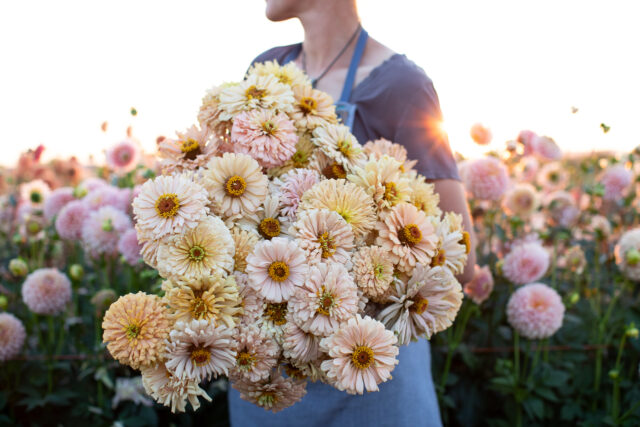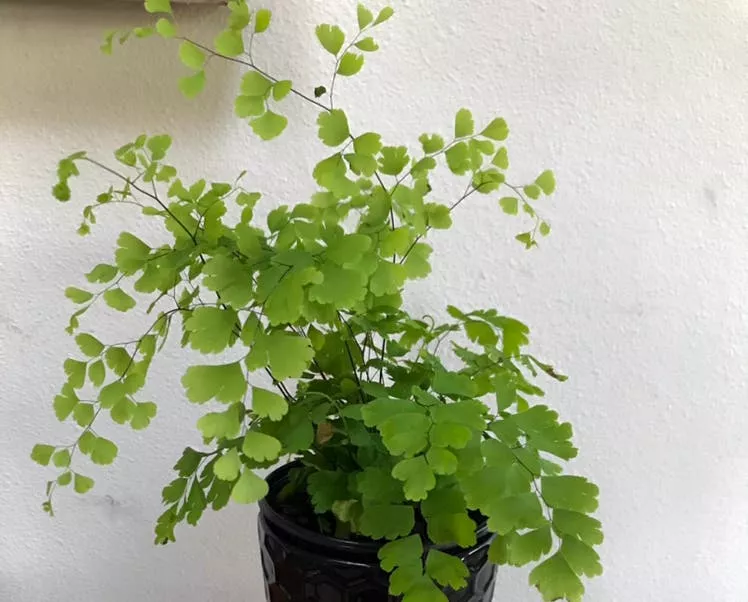Maidenhair ferns thrive in indirect light and high humidity. They need consistently moist soil without becoming waterlogged.
Maidenhair ferns, with their delicate fronds and unique appearance, are a favorite among plant enthusiasts. These ferns require specific care to flourish indoors. Place them in a spot with indirect light to mimic their natural habitat. High humidity is essential, so misting the leaves regularly can help.
Use well-draining soil to prevent root rot, and ensure the soil remains moist but not soggy. Regularly check for pests and remove any dead fronds to keep the plant healthy. With proper attention, Maidenhair ferns can be a stunning addition to any indoor garden.

Credit: greg.app
Introduction To Maidenhair Ferns
Welcome to the ultimate guide on caring for Maidenhair Ferns. These delicate plants bring elegance to any space. Let’s dive into their unique characteristics, origin, and habitat.
Characteristics
Maidenhair Ferns are known for their lacy, bright green fronds. Their stems are thin and black, giving them a unique appearance. These ferns grow in clusters and can reach up to 20 inches in height.
Key characteristics include:
- Lacy fronds: Delicate and airy leaves.
- Thin stems: Black and wire-like.
- Cluster growth: Forms clumps for a fuller look.
Origin And Habitat
Maidenhair Ferns originate from tropical and subtropical regions. They thrive in warm, humid environments, often found near waterfalls or moist forest floors.
Their natural habitat provides constant moisture and indirect sunlight. Here’s a quick overview:
| Region | Climate | Environment |
|---|---|---|
| Tropical | Warm and Humid | Near Waterfalls, Moist Forests |
| Subtropical | Moderate Warmth | Shaded, Moist Areas |
Understanding these origins helps in replicating similar conditions at home.
Choosing The Right Location
Finding the perfect spot for your Maidenhair Fern is crucial. These delicate plants need specific conditions to thrive. Let’s explore the ideal light and temperature requirements.
Ideal Light Conditions
Maidenhair Ferns love indirect light. Direct sunlight can scorch their delicate leaves. Place them in a spot with bright but filtered light. North or east-facing windows are ideal. If your home is too bright, use sheer curtains to diffuse the light.
Temperature Requirements
These ferns prefer consistent temperatures. Keep them away from drafts and sudden temperature changes. The ideal temperature range is between 60-75°F (15-24°C). Avoid placing them near heaters or air conditioners.
| Condition | Requirement |
|---|---|
| Light | Indirect, filtered light |
| Temperature | 60-75°F (15-24°C) |
Ensuring the right location for your Maidenhair Fern will help it flourish. Keep these tips in mind to provide the best environment for your plant.
Soil And Potting Mix
Soil and potting mix are crucial for the health of Maidenhair ferns. These delicate ferns need specific conditions to thrive. The right soil ensures proper drainage and nutrient uptake. Let’s dive into the details of the best soil types and repotting tips for Maidenhair ferns.
Best Soil Types
Maidenhair ferns prefer a well-draining potting mix. A mix that retains moisture without becoming waterlogged is essential. You can create the perfect soil mix by combining the following ingredients:
- Peat moss: Retains moisture and provides a light texture.
- Perlite: Improves drainage and prevents soil compaction.
- Compost: Adds nutrients and supports healthy growth.
- Pine bark: Enhances aeration and drainage.
Combine these ingredients in a ratio of 2:1:1:1 for the best results. The soil should feel light and crumbly in your hands.
Repotting Tips
Repotting Maidenhair ferns helps them stay healthy and grow well. Follow these tips for successful repotting:
- Choose the right pot: Select a pot with drainage holes.
- Prepare the new soil mix: Use the recommended soil mix mentioned above.
- Remove the fern gently: Carefully take the fern out of its current pot.
- Trim dead roots: Cut away any brown or dead roots with clean scissors.
- Place in the new pot: Position the fern in the center of the new pot.
- Fill with soil: Add the new soil mix around the roots, pressing lightly.
- Water thoroughly: Water the fern until excess water drains out.
Repotting should be done once a year or when the fern outgrows its pot. This ensures your Maidenhair fern has enough space and nutrients to flourish.
Watering Guidelines
Proper watering is essential for the health of Maidenhair Ferns. These delicate plants thrive in consistent moisture but can suffer if overwatered or left too dry. Follow our expert guidelines to keep your ferns lush and vibrant.
Frequency
Maidenhair Ferns need regular watering to maintain their delicate fronds. Water your fern every 2-3 days during the growing season. In winter, reduce the frequency to once a week. Always check the soil before watering. The top inch should be slightly dry to the touch.
| Season | Watering Frequency |
|---|---|
| Spring/Summer | Every 2-3 days |
| Fall/Winter | Once a week |
Water Quality
Maidenhair Ferns prefer soft, non-chlorinated water. Tap water can contain chlorine and fluoride, which may harm your fern. Use filtered water or let tap water sit out for 24 hours before using. This allows harmful chemicals to evaporate. Rainwater is also an excellent choice.
- Use filtered water
- Let tap water sit for 24 hours
- Collect and use rainwater
Maintain consistent moisture without waterlogging the soil. Use a pot with drainage holes to avoid water stagnation.
Check soil moisture regularly.
Avoid letting the soil dry out completely.
Ensure good drainage to prevent root rot.
Humidity Needs
Maidenhair ferns are delicate plants that thrive in high humidity. They need consistent moisture to maintain their lush, green foliage. Understanding their humidity needs can help you keep them healthy and vibrant.
Maintaining Humidity
Maidenhair ferns need 50-60% humidity. Your home might not be this humid. To help, you can use some simple tricks.
- Place a humidifier near your fern.
- Group your ferns with other plants. They create a humid microclimate.
- Mist your fern daily with water.
- Place your fern on a tray with pebbles and water.
Tools And Techniques
Using the right tools can make maintaining humidity easier. Here are some effective options:
| Tool | Benefit |
|---|---|
| Humidifier | Keeps air consistently moist |
| Misting Bottle | Easy to mist plants daily |
| Humidity Tray | Creates a humid environment |
| Hygrometer | Measures humidity levels |
Using these tools ensures that your maidenhair fern gets the moisture it needs. Happy ferns lead to happy homes!

Credit: www.floretflowers.com
Fertilizing Practices
Proper fertilization is essential for the health of your Maidenhair Ferns. These delicate plants require the right nutrients to thrive. This guide will help you understand the types of fertilizers to use and how to apply them.
Types Of Fertilizers
There are several types of fertilizers suitable for Maidenhair Ferns. Each type has its own benefits:
- Organic Fertilizers: These are made from natural materials. Examples include compost and fish emulsion.
- Inorganic Fertilizers: These are synthetic and provide a precise nutrient mix. Examples include balanced liquid fertilizers.
- Slow-Release Fertilizers: These release nutrients over time. Ideal for consistent feeding.
Organic fertilizers improve soil health and provide slow nutrient release. Inorganic fertilizers deliver nutrients quickly. Slow-release fertilizers are convenient and reduce the risk of over-fertilization.
Application Schedule
Following a proper application schedule is crucial for your Maidenhair Fern’s growth. Here’s a simple guide:
| Season | Frequency | Type |
|---|---|---|
| Spring | Every 2 weeks | Balanced liquid fertilizer |
| Summer | Every 3 weeks | Balanced liquid fertilizer |
| Fall | Once a month | Organic fertilizer |
| Winter | Once | Slow-release fertilizer |
In spring and summer, feed your ferns more often. In fall and winter, reduce the frequency. This schedule ensures your ferns get the nutrients they need.
Always follow the instructions on the fertilizer package. Over-fertilizing can harm your plants. Use a diluted solution to avoid burning the roots.
Common Pests And Diseases
Maidenhair ferns are delicate and beautiful plants. They can be affected by various pests and diseases. Knowing how to identify and treat these issues is crucial for keeping your ferns healthy and vibrant.
Identification
Identifying pests and diseases early can save your fern. Here are some common issues:
- Aphids: Small green insects that cluster on new growth. They suck plant sap.
- Spider Mites: Tiny red or brown dots on leaves. They leave webbing.
- Scale Insects: Brown, shell-like bumps on stems and leaves. They also suck sap.
- Fungal Infections: Black or brown spots on leaves. Leaves may curl or wilt.
Treatment Options
Once you’ve identified the problem, it’s time to treat it. Here are some solutions:
Pests:
- Aphids: Spray with a mix of water and mild soap.
- Spider Mites: Increase humidity and wash leaves with water.
- Scale Insects: Remove by hand and treat with neem oil.
Diseases:
- Fungal Infections: Remove infected leaves and improve air circulation.
Keep your maidenhair ferns healthy by regularly checking for pests and diseases. Quick action helps ensure they stay lush and beautiful.

Credit: issuu.com
Pruning And Maintenance
Pruning and maintenance are essential for keeping your Maidenhair Ferns healthy and vibrant. Regular trimming helps promote new growth and maintains the plant’s shape. Proper seasonal care ensures your ferns thrive throughout the year.
Trimming Techniques
Knowing the right trimming techniques can make a big difference. Follow these simple steps:
- Use sharp, clean scissors to avoid damaging the plant.
- Remove dead or yellowing fronds at the base.
- Trim back overgrown fronds to encourage new growth.
Always be gentle while handling the delicate fronds. Avoid cutting too close to the main stem.
Seasonal Care
Maidenhair Ferns need specific care during different seasons. Below is a seasonal care guide:
| Season | Care Tips |
|---|---|
| Spring | Increase watering and ensure indirect light. |
| Summer | Mist regularly to maintain humidity. |
| Fall | Reduce watering but keep the soil moist. |
| Winter | Keep away from cold drafts; reduce watering. |
Following these seasonal tips will keep your Maidenhair Ferns healthy all year round.
Frequently Asked Questions
How Often Should I Water Maidenhair Ferns?
Maidenhair Ferns prefer consistently moist soil. Water them every few days, but avoid waterlogging. Ensure the top inch of soil remains slightly damp.
Can Maidenhair Ferns Grow Indoors?
Yes, Maidenhair Ferns thrive indoors. Place them in a spot with indirect light and high humidity. Avoid direct sunlight.
What Kind Of Soil Is Best For Maidenhair Ferns?
Maidenhair Ferns need well-draining, rich soil. Use a mix of peat moss, perlite, and potting soil. This combination ensures proper moisture retention and drainage.
How Do I Increase Humidity For Maidenhair Ferns?
Increase humidity by misting the leaves regularly. You can also place a humidifier nearby or use a humidity tray with water and pebbles.
Conclusion
Caring for Maidenhair Ferns can be rewarding and straightforward. With proper attention, they will thrive beautifully. Remember to provide indirect light, maintain humidity, and water consistently. Following these simple steps will ensure your ferns remain healthy. Enjoy the lush, delicate beauty of your Maidenhair Ferns.
Happy gardening!



